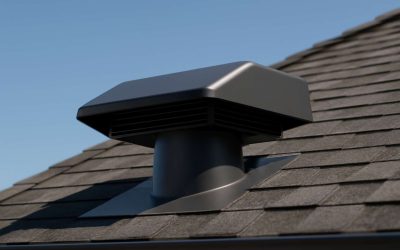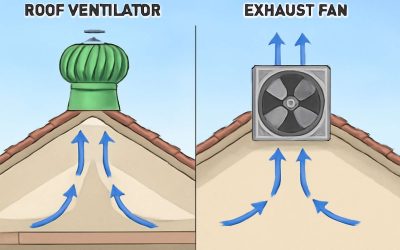
Rooftop ventilation fans exhaust stale air and draw in fresh air to cool occupied spaces. They are used in various commercial and industrial applications such as hospitals, schools, restaurants and warehouses. Typically, they have a motor and are hardwired into the electrical system to work in tandem with the ventilation system.
A rooftop ventilation fan is an efficient way to reduce energy costs in your home. It also improves the comfort of occupants. In cold climates, it prevents ice dams from forming in the roof. In hot climates, it helps cool the attic and saves on electricity bills by reducing the need for air conditioning.
The Roof Ventilation Strategy
In any given summer, the attic can get pretty warm inside a house if it is not properly ventilated. That heat can cause your air conditioner to work harder to cool your home. That’s why it is so important to have a good ventilation system in place.
The first step is to make sure that you have plenty of vents in the attic. These can be exhaust style, like ridge or soffit vents, or intake style, like eave or cupola vents. Exhaust style vents have a larger surface area than intake style, and because they are located higher on the roof line they help pull the hot air out of the attic.
It’s also a good idea to add a ventilation system that includes solar powered attic fans. These work by using the stack effect and wind effect to move the hot air out of the attic. They are more natural and effective than other ventilation systems, but it is important to remember that solar powered vents can also be very expensive to install.
Choosing the Best Location for Your Rooftop Ventilation Fan
There are three common places to mount a ventilation fan: on the roof, in a wall, or in a duct. These locations are determined by the airflow pattern that needs to be created. You will also want to consider the type of air that needs to be moved, as well as the amount of space in the duct.
Choose a Rooftop Ventilation Fan that’s Right for Your Home
The fan should be positioned where it can easily exhaust the air without being blocked by obstructions or obstacles. It should also be situated close to the eave and gable vents, which will help it reach the attic.
Adding the right attic fan can significantly improve the efficiency of your HVAC system and increase your comfort levels in your home. It can also help reduce the risk of damage to your property and furnishings, and can extend the life of your air conditioner.
A good ventilation fan should also have a thermostat that can be programmed to turn the fan on or off when it’s needed, and an adjustable humidistat to help keep your attic dry and healthy. Some fans can also be paired with air purifiers to help remove pollutants from the incoming air.



0 Comments